Bram Stoker "vampirized" Marie Nizet?23:43 Jul 16 2009
Times Read: 983
Bram Stoker "vampirized" Marie Nizet?
by Dragonrouge
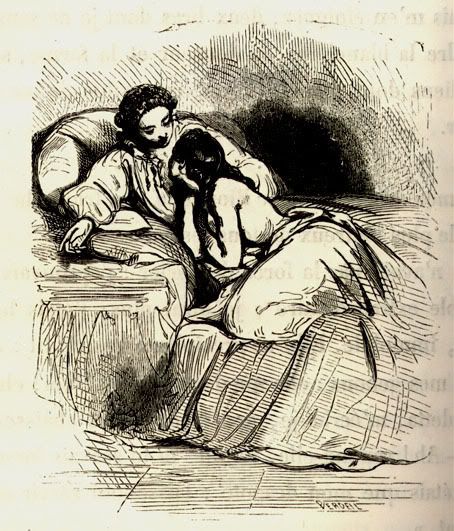 One of the first, if not the first, vampire novels ever written by a woman!
Stoker knew about Nizet`s novel?
One of the first, if not the first, vampire novels ever written by a woman!
Stoker knew about Nizet`s novel?
Marie Nizet was born in January, 19th, 1859 in Bruxelles and died at Etterbeek in March, 15th, 1922.
The young Belgian wrote her novel
Captain Vampire (Original title
Capitaine Vampire - une nouvelle roumaine) at 18 years old and 18 years before Bram Stoker published his notorious
Dracula. Now nobody remembers Marie Nizet, but Stoker is famous.
Nizet places the action of her novel in 1877-1878 in Romania and Bulgaria, during the war that almost destroyed the Ottoman Empire and granted the independence of the Balkan states. In 1877 Romania declared it`s Independence from the Ottoman Empire and allied Russians, engaging a fierce battle against the Turks in Bulgaria. Despite this fact, the Russians were not trusted very much by Romanians, as Nizet`s novel states. The novel is about a vampire with human appearance named Boris Liatoukine who is an officer in the Russian Imperial Army. Liatoukine tries and fails to seduce and steal the young Romanian lady Marioara Slobozianu from her lover (later husband) Ion Isacesco. Ion later manages to kill Liatoukin on the battlefield by shooting him and piercing his chest three times. He also cuts off the finger with the engagement ring that vampire had stolen from Marioara. Surprisingly, later on, the Romanian couple accidentally see the man alive and marrying one of Marioara`s friends, Zamfira. The two human couples from
Captain Vampire resemble the couples from Stoker`s novel: Mina-Jonathan and Lucy-Lord Holmwood. Stoker knew well French language and visited France many times between 1879 - the time when
Captain Vampire was published in Bruxelles and Paris - and 1887 - the time when Stoker published
Dracula. It is very possible to have read Nizet`s novel and use it as a source of inspiration for the character and the plot for Dracula.

Another interesting thing: one of the Bram Stoker`s brothers was a doctor and was on the battlefield during the 1877 war and was enrolled on the Ottoman side!
Maybe that is why his interest in the Balkan`s folklore was increased and he choose finally to move the action from Austria to Transylvania and to make the vampire a male character.
We can not say that Stoker knew for sure about Nizet`s novel but the similarities between the two plots and the main characters, the fact that Stoker could have read in France Nizet`s novel plead in the favor of this conclusion.
How Marie Nizet found out about vampires?
During her studies in Paris at the Gatti Institute, Marie befriended the daughters of Ion Heliade-Radulescu (Romanian poet, folklorist and philologist, the founder and the first President of the Romanian Academy): Eufrosina and Virgilia. Marie was very enthusiastic about Romania and she even wrote a poetry volume entitled
Romania (chants de la Roumanie) where the vampire is present in many of the poems. The poems mentioning the vampire were not translated in English and they will be submitted in the Vampire Rave database in their original language.The poems could be read online here:
http://www.archive.org/stream/romniachantsdel00nizegoog#page/n8/mode/1up
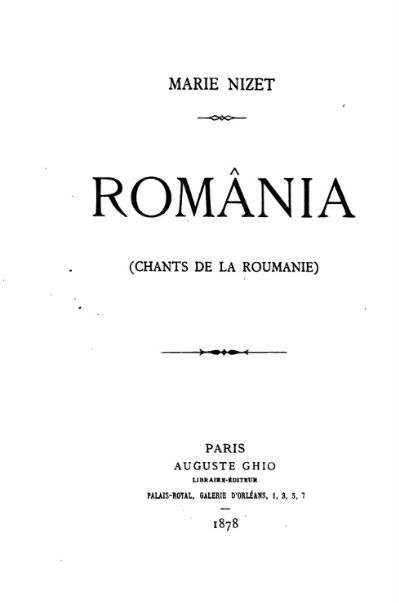
Marie Nizet considered Romania similar to Belgium and she mentioned that Romanians refered at the Valons as brothers (maybe because their common Latin origin). She was a militant against the Russian tendencies of extending their power over Romania and she mentioned that the Russian Empire should respect the new earned independence of Romania. This arguments were reflected also in her novel where the fictional Russian colonel Liatoukine appears described as a blood thirsting villain.
Marie wrote a poem dedicated to the memory of Ion Heliade-Radulescu, the Romanian poet and fighter in the 1848 Revolution that was also the author of the poem
Sburatorul (1843). The poem was inspired in the Romanian folklore and tells the story about an incubus who visits a young girl during her sleep in the night. "The one who flies" (sburatoul, aka zburatorul in modern Romanian) usually refers to the Dacian heraldry symbol and also their fighting flag named dracone which was a flying, wolf-headed European dragon.But here we find this word with a different folkloric meaning: a mysterious being that comes secretly and bewitches the young virgin making her loose her mind and provoking her loose of weight and paleness. The infamous incubus who sometimes could take the shape of a cometh ("A dragon of light with fiery tail"[1]), descends through the horn and enters the house where he takes the form of a lovely and very slim young man with golden hair but with a nose reminding of a corpse and without blood in his veins[2]. It is considered guilty for the unstoppable erotic feelings that animate suddenly the young girl at the age of her chemical transformations. The poem was very important for the writer and defined him, and his supporters for the Romanian folklore and traditions[3].
It's obvious that Marie was aware of Heliade's poem and maybe she used his image in completing what she already knew about the Romanian vampires from the daughters of Heliade-Radulescu. She also may have been used other sources for describing the 1877 war: other Romanian refugees stories and the French newspapers of that time.
Dracula and Liatoukine
Dracula and Liatoukine have some important traits in common: they are both strange and curageous noble men who came to conquer the land of two pair of lovers, they both manifest an inhuman strength despite their rather skeletal body, they have a fiery piercing glare and an eerie pale skin, the same black beard and hair, but mainly: they share the vampiric rave of drinking human blood! There are of course some important differences: Nizet`s vampire is moving during the day, eats, drinks, his body has a shadow and so on.
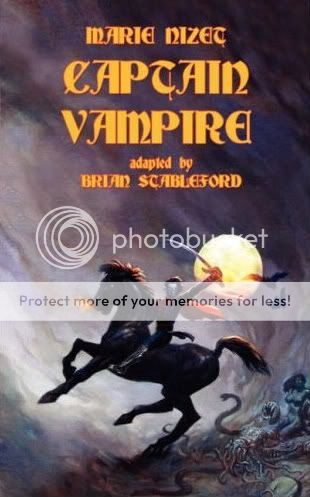
There is one more important feature that the both characters have: the power of mind that both seem to have over their victims!
Hypnosis
In 1883 a few years before
Dracula`s apparition, the brother of Marie, Henry Nizet (who spend a part of his life in Romania and knew very well the country), publishes his novel:
Suggestion. In this novel is described a cynical young man, Paul Lebarrois who submits with the power of hypnosis the young woman Sephorah and leads her to suicide.The episodes where the state of hypnosis is described resemble of the passage where Lucy, after she recieves the baptism of blood from count Dracula, falls under his mental powers and is hypnotized by Van Helsing to reveal his route.The place where the action takes part in
Suggestion is Bucovina, very close to Borgo pass, where Stoker placed count Dracula`s castle!
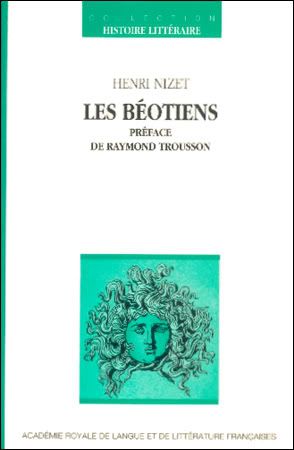
In the novel also appears a young woman hypnotized during a demonstration by a certain Ringaud.The young woman name was: Lucie, the French variant of Lucy! Stoker was a writer who was interested in hypnosis and he was reading books on this matter. It is possible that he was aware of Henry Nizet`s novel too and use it also in combination with other sources for the ending part of
Dracula.
Conclusion
Despite the fact that is very possible that Stoker could have read the novels of Nizet brothers, there is no reference to these two novels in any of his notes, journals or letters. Maybe the best way to find out yourself if Stoker was inspired by the 19 years Belgian lady is to read it yourself! The novel
Capitaine Vampire - une nouvelle roumaine by Marie Nizet was adapted, translated in English and annotated by Brian Stableford and published in 2007 under the name
Captain Vampire and you can find the entry in the Vampire Rave database here:
https://www.vampirerave.com/db/entry.php?id=6718&category=10
 NOTES:
NOTES:
[1]"Dar ce lumină iute ca fulger trecătoare
Din miazănoapte scapă cu urme de scântei?
Vro stea mai cade iară? vrun împărat mai moare?
Ori e--să nu mai fie! — vro pacoste de zmei?
Tot zmeu a fost, surato. Văzuşi, împeliţatu,
Că ţintă l-alde Floarea în clipă străbătu!
Şi drept pe coş, leicuţă! ce n-ai gândi, spurcatu!
Închină-te, surato! — Văzutu-l-ai şi tu?
Balaur de lumină cu coada-nflăcărată,
Şi-pietre nestemate lucea pe el ca foc."
(Ion Heliade Radulescu - Sburatorul)
[2] "Ca brad un flăcăiandru, şi tras ca prin inel,
Bălai, cu părul d-aur! dar slabele lui vine
N-au nici un pic de sânge, ş-un nas --ca vai de el!"
(Ion Heliade Radulescu -
Sburatorul)
[3]Zburatorul (of which Sburatorul is an antiquated variant, used notably in the works of Ion Heliade Radulescu) was the embodiment of lust, a beautiful but eerie young man with demonic features who visits adolescent girls in their dreams. Eugen Lovinescu explained the choice of choosing this title for his Literature Magazin founded in 1919 of in his first editorial:
"Vague thrills, warmth and coldness, yearnings for impossible beauties, and, at once, torpor, a deep unsettling of the entire soul, bashfulness and insane certainty, an escape from the world and realities, blended with a belief in chimaera, restlessness and a thirst for rest... [These come from] the very same Zburatorul, the same pale master of youthful dreams, the same kiss of warm lips on cool foreheads, the same mystical engagement to whatever will be. [...] Those who begin issuing this magazine have received Zburatoruls kiss a long time ago. They are halfway through on the path of life. They have not, however, forgotten the thrills of yesteryear, nor taste and disgust for the world, the impossibility of fitting in and belief in impossible chimaera. They have not forsaken their idealism."
(Sburatorul, an article by Eugen Lovinescu also published in volume "Din presa..." 1919)
For more info go here:
http://en.allexperts.com/e/s/sb/sbur%C4%83torul.htm
Written sources
- Capitanul Vampir, by Marie Nizet, Sigma, Bucuresti, 2003
- Captain Vampire, by Marie Nizet adapted by Brian Stableford, Hollywoodcomics.Com Llc, ISBN 1934543012
- Dracula by Matei Cazacu, Humanitas, Bucharest, 2008, ISBN 9789735019396
- Dracula: Suivi Du Capitaine Vampire, Une Nouvelle Roumaine, by Marie Nizet, 1879, by Matei Cazacu, Tallandier, Paris, ISBN 2847341439
- Les Beotiens, by Henry Nizet, the second edition Bruxelles, 1993
- Sburatorul, an article by Eugen Lovinescu published in volume "Din presa..." 1919
Electronic sources
Solaris Magazine (French)
http://www.revue-solaris.com/numero/1998/127.htm
Dictionnaire des femmes belges (French)
http://books.google.fr/books?id=fIPj8NRvuNAC&pg=PA422&dq=%22%C3%A0+bruxelles,+marie+nizet%22
Black Coat Press
http://www.blackcoatpress.com/vampirecaptain.htm
Wiki source
http://fr.wikipedia.org/wiki/Marie_Nizet
* My thanks to ManzanaOscura.She edited my text and corrected my mistakes and without her enthusiastic support I probably could not finish my research.
This article was inspired by the brilliant research about Marie Nizet and her book made by Professor Matei Cazacu.



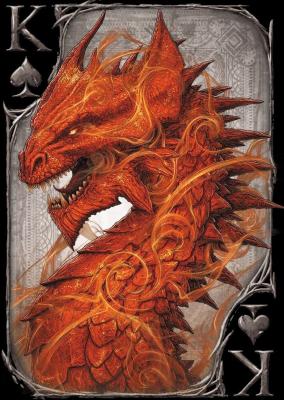











COMMENTS
-
ManzanaOscura
13:13 Jul 18 2009